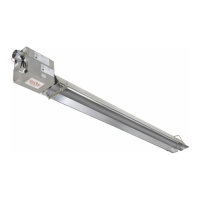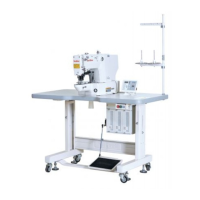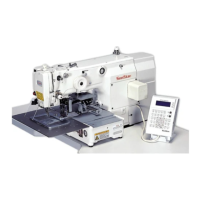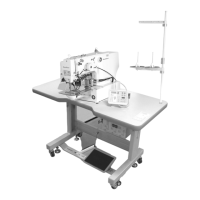Form 43343320
-4- Dec 2017
4.0) MINIMUM CLEARANCES TO COMBUSTIBLES
Install the warnings card (ordered separately) and complete the blank spaces using the clearances from
combustibles table below. See Section 26 for a printed copy of the warnings card.
Minimum clearances to combustibles shall be measured from the outer surfaces as shown in the following
diagram:
MINIMUM CLEARANCES TO COMBUSTIBLES
* When used indirect vented, minimum clearance for CEILING must be: 12” for SPS/SPU 50-75 and 18” for
SPS/SPU 100-200. If optional corner and u-bend reflectors are not used, the clearance must be 18”.
** Maximum clearance below reduces by 50% once you are 25ft. downstream from the burner box.
▲WARNING: Certain materials or objects, when stored under the heater, will be subjected to radiant heat and
could be seriously damaged. Observe the Minimum Clearances to Combustibles listed in the manual and on the
heater at all times.
NOTE:
1. The clearances specified above must be maintained to combustibles and other materials that may be
damaged by temperatures 90ºF above ambient temperature. Clearances to combustibles are posted on the
burner box. In areas used for storage of combustible materials where they may be stacked below the heater,
NFPA54 requires that the installer must post signs that will “specify the maximum permissible stacking height
to maintain the required clearances from the heater to combustibles.” SunStar recommends posting these
signs adjacent to the heater thermostat or other suitable location that will provide enhanced visibility.
2. The stated clearance to combustibles represents a surface temperature of 90 ºF (32 ºC) above room
temperature. Building materials with a low heat tolerance (such as plastics, vinyle siding, canvas, tri-ply, etc.)
may be subject to degradation at lower temperatures. It is the installer’s responsibility to assure that adjacent
materials are protected from degradation.

